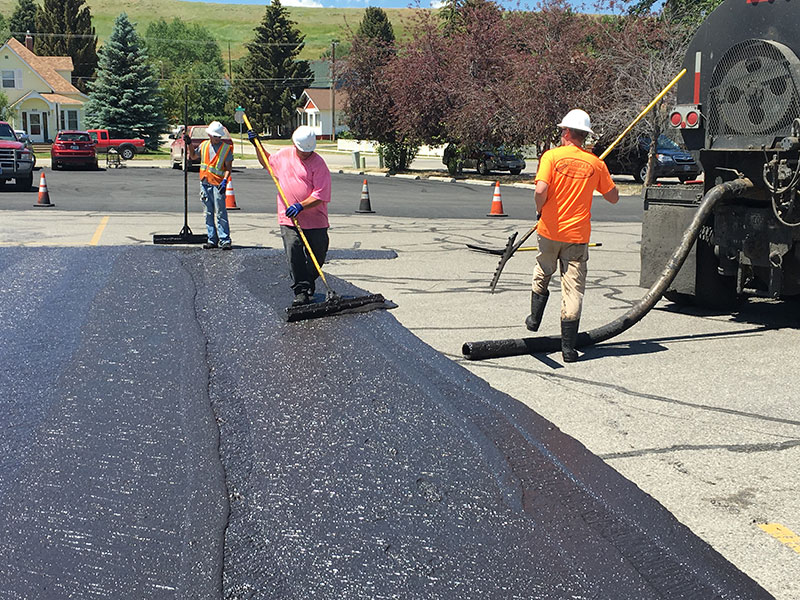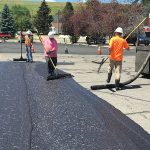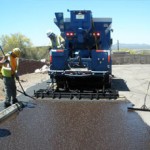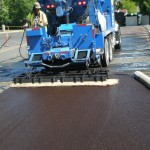Slurry Seal
 Durability and Economy make Slurry Seals a Great Option in Asphalt Maintenance
Durability and Economy make Slurry Seals a Great Option in Asphalt Maintenance
Slurry seals provide a new wear surface over structurally sound asphalt and reduce the need for costly repairs. Properly applied, a slurry seal has a typical life expectancy of 5-8 years. The advantages of a slurry seal are twofold. First, it provides a more durable and longer lasting seal than a typical application of sealcoat. Secondly, it does so at a price which is typically lower than for a similar chip seal or asphalt overlay application. In addition, certain problems associated with a chip seal (such as bleed through) are eliminated with a slurry seal.
Slurry seals are a great option as an economical alternative to chip seals on streets and roads, and function well at airports because there is virtually no loose aggregate to damage aircraft. Slurry seals provide a durable skid resistant surface which holds up well to straight line or turning traffic.
Examples of Our Work
Slurry seals come in three varieties known as Type I, Type II, and Type III
The major difference between the three types is the size of the aggregate used in the design mix formula.
|
1
|
Type I slurry contains 1/8” aggregate and is commonly used for maximum crack penetration and sealing in low density/low wear traffic areas. |
|
2
|
Type II slurry uses 1/4” aggregate and is commonly used to seal, correct moderate to severe raveling, oxidation damage and loss of matrix, as well as improving skid resistance. It is the most commonly used slurry seal and is widely employed where moderate to heavy traffic is found. |
|
3
|
Type III slurry uses 3/8” aggregate and is used to correct severe surface conditions and provide skid resistance under heavy traffic loads. |
Process
A specially equipped truck blends specific quantities of emulsion oils, aggregate, water, and various minerals. This slurry is then expelled from the truck into a spreader box which guarantees a uniform application of materials across the surface to be treated. Mixing and spreading are accomplished in a single operation.








